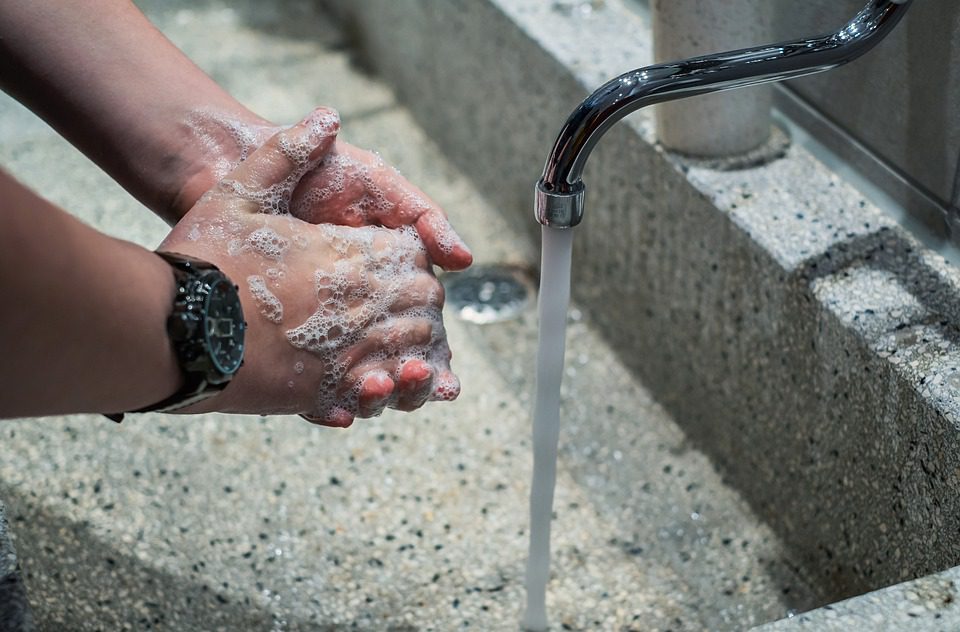The research, published on the public service bioRxiv*, evaluated the survival and infectivity of the SARS-CoV-2 Wuhan strain and variations of concern (VOCs) – Alpha, Beta, Delta, and Omicron versions.
The researchers assessed the environmental stability of the variations using human skin models and plastic substrates.
Introduction
Understanding the etiology of SARS-CoV-2 and its environmental stability is crucial for managing the continuing epidemic, which has inflicted severe harm worldwide.
The SARS-CoV-2 virus has been highly transmissible from its beginnings.
The virus’s transmissibility has increased due to the introduction of multiple variations, as indicated by the number of infection cases worldwide despite vaccinations and lockdowns.
The increased contagiousness and transmissibility of the SARS-CoV-2 is attributed to many factors, including increased viral load shed from infected individuals, a more extended viral shedding period, and a decrease in the minimum viral load required to establish infection, changes in the infection target site, and increased environmental stability.
However, no research has directly compared and reported the environmental stability of the original virus and its variations of concern.
Previous research has shown that the Alpha and Beta exhibit equal stability.
Some studies have compared the SARS-CoV-2 virus’s stability to (SARS-CoV-1) and the influenza virus.
The current work examined the differences in viral stability between the Wuhan strain and all VOCs, including the Omicron and variants.
They also investigated the disinfection efficacy of the Wuhan strain against all VOCs.
The virus’s stability was tested on human skin surfaces and plastic (polystyrene plate). The researchers created an ex vivo model using human skin from forensic autopsy materials.
After applying it to the plastic/skin surface, they examined the virus’s survival.
They investigated the stability of several viruses on the surface of a human skin model and the efficiency of various disinfectants against viruses on human skin.
The research made use of alcohol-based disinfectants such as ethanol and isopropanol.
The detection limit for the virus titer remaining on the surface was set at 100.5 TCID50. The survival time was described as the period until the virus on the surface was no longer detectable.
The survival periods of the Wuhan strain, Alpha variation, Beta variant, Gamma variant, Delta variant, and Omicron variant on the plastic surface were 56.0 h, 191.3 h, 156.6 h, 59.3 h, 114.0 h, and 193.5 h, respectively.
The survival periods of the Wuhan strain, Alpha variation, Beta variant, Gamma variant, Delta variant, and Omicron variant on the human skin surface were 8.6 h, 19.6 h, 19.1 h, 11.0 h, 16.8 h, and 21.1 h, respectively, with the Omicron variant having the most significant survival duration.
Within 15 seconds, the disinfectants were successful against all viruses.
On the other hand, the VOCs were marginally more resistant than the Wuhan strain.
An ex vivo study on human skin revealed total inactivation of all viruses after 15 seconds of exposure to 35% ethanol.
As a result, the researchers strongly advocate that the current hand hygiene practices be maintained for infection management, as recommended by the World Health Organization.
Thus, according to this research, the VOCs displayed more than two-fold higher survival durations on plastic and skin surfaces than the Wuhan strain and remained infective on the skin surfaces for more than 16 hours.
The Study’s Limitations
The report does not mention the causes underlying the variations’ improved environmental stability.
According to the experts, further studies utilizing recombinant viruses might help them figure out what’s causing this.
The external environment and body fluid composition affect the estimated survival time.
In this investigation, the virus was ultracentrifuged and distributed in PBS (phosphate buffer saline) solvent.
As a result, it is prone to change based on the number of variables in the environment.
Furthermore, there is no apparent association between the viral load on the surface and the probability of transmission.
As a result, it may be appropriate to take the survival time in this study as a reference value, as stated by the researchers.
Conclusiono
The capacity to predict the stability of the virus and its variations responsible for the continuing pandemic is critical for infection prevention and control.
The environmental stability of the SARS-CoV-2 and its variants of concern was investigated in this study.
It shows that the Omicron form had the most significant environmental stability among VOCs, implying that Omicron has swiftly overtaken the Delta variety and spread aggressively worldwide.
Furthermore, these results will assist substantially in clarifying the process of VOC dissemination with the inclusion of genetic studies, the researchers conclude.











Leave a Reply